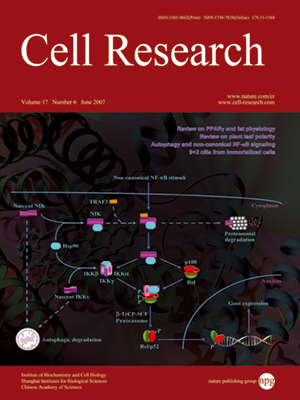
Volume 17, No 6, Jun 2007
ISSN: 1001-0602
EISSN: 1748-7838 2018
impact factor 17.848*
(Clarivate Analytics, 2019)
Volume 17 Issue 6, June 2007: 512-519
REVIEWS
Transcriptional, post-transcriptional and post-translational regulations of gene expression during leaf polarity formation
Lin Xu1,2, Li Yang1,3 and Hai Huang1
1National Laboratory of Plant Molecular Genetics, Shanghai Institute of Plant Physiology and Ecology, Shanghai Institutes for Biological Sciences, Chinese Academy of Sciences, 300 Fenglin Road, Shanghai 200032, China; 2Present address: IBMP, CNRS, Universite Louis Pasteur, 67084 Strasbourg, France; 3Present address: Department of Biology, University of Pennsylvania, Philadelphia, PA 19104, USA
Correspondence: Hai Huang(hhuang@sippe.ac.cn)
Leaf morphogenesis requires the establishment of adaxial-abaxial polarity after primordium initiation from the shoot apical meristem (SAM). Several families of transcription factors are known to play critical roles in promoting adaxial or abaxial leaf fate. Recently, post-transcriptional gene silencing pathways have been shown to regulate the establishment of leaf polarity, providing novel and exciting insights into leaf development. For example, microRNAs (miR165/166) and a trans-acting siRNA (TAS3-derived tasiR-ARF) have been shown to repress the expression of several key transcription factor genes. In addition, yet another level of regulation, post-translational regulation, has been revealed recently by studies on the role of the 26S proteasome in leaf polarity. Although our understanding regarding the molecular mechanisms underlying establishment of adaxial-abaxial polarity has greatly improved, there is still much that remains elusive. This review aims to discuss recent progress, as well as the remaining questions, regarding the molecular mechanisms underlying leaf polarity formation.
Cell Research (2007) 17:512-519. doi: 10.1038/cr.2007.45; published online 5 June 2007
FULL TEXT | PDF
Browse 1843


